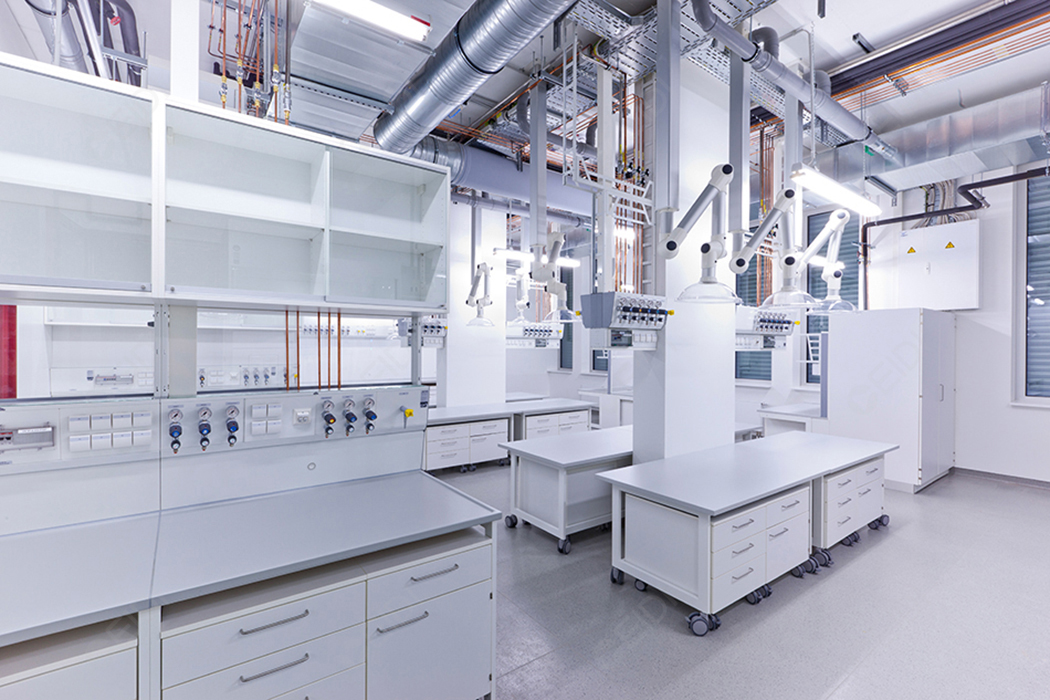Welcome to the official website of Xidi laboratory, the laboratory design and decoration recognize Xidi!
|
|
Home >> News >> Technology
文章出处:Technology|阅读量:817|发表时间:2020-07-27
The design of PCR laboratory must be divided into four areas, specifically, the PCR laboratory can be divided into four areas, namely: reagent storage and preparation area, specimen preparation area, amplification reaction mixture preparation and amplification area, and amplification product analysis Area.
Let's briefly introduce the PCR laboratory, which is also called the "gene amplification laboratory". The so-called "PCR" is simply the abbreviation of "Polymerase Chain Reaction", which means polymerase chain reaction.
PCR is a molecular biology technology that can amplify specific DNA fragments, just like special DNA replication in vitro. Through the experiment of the PCR laboratory, the virus content in the test product can be quickly grasped, and its accuracy is as high as nanometers.
Regional division of PCR laboratory design
1. Reagent storage and preparation area: The function of this area is to store the preparation of reagents, the dispensing of reagents, and the preparation of the main reaction mixture. Note that the materials used in the experimental project, such as reagents and reagent raw materials, specimens and specimen raw materials, etc., must be stored in this area. As for whether the airflow pressure needs to be controlled, there are no strict requirements in this area.
2. Specimen preparation area: The function of this area is the preservation of clinical specimens, the extraction and storage of nucleic acids (RNA and DNA), the addition of nucleic acids to the amplification reaction tube and the synthesis of DNA when measuring RNA. The precautions are to prevent the air in the adjacent area from entering this area, and the pressure gradient should be set to a positive pressure compared to the adjacent area. When carrying out the operation of the experimental project, the staff should avoid unnecessary walking to prevent aerosol pollution during the sample addition operation.
3. Amplification reaction mixture preparation and amplification zone: The function of this zone is to amplify DNA and make the prepared experimental reagents into a reaction mixture. Note that the pollution index of the experimental amplification is relatively high, and the pressure gradient should be set to negative pressure compared to the adjacent area. The advantage of this is that it can effectively prevent the aerosol from leaking from the area.
4. Amplified product analysis area: The function of this area is to determine the relevant amplified fragments. Note that if the fully automatic closed analytical instrument has been preset during laboratory design, then there is no need to divide this area. The pressure gradient in this area should be set to negative pressure compared to the adjacent area. The advantage of this is that it can effectively prevent the amplification product from spreading to other areas.
In addition to the regional division of PCR laboratory design, complete supporting facilities are also indispensable. Let's put it this way, it is a necessary condition to ensure the experimental work, but corresponding equipment and instruments should be equipped according to the experimental content, such as ultra-clean workbenches, biological safety cabinets, centrifuges, samplers, etc.
The above introduced the regional division of PCR laboratory design. If you want to know more about laboratory design, please click "Technical Support", I believe it will be helpful to you.